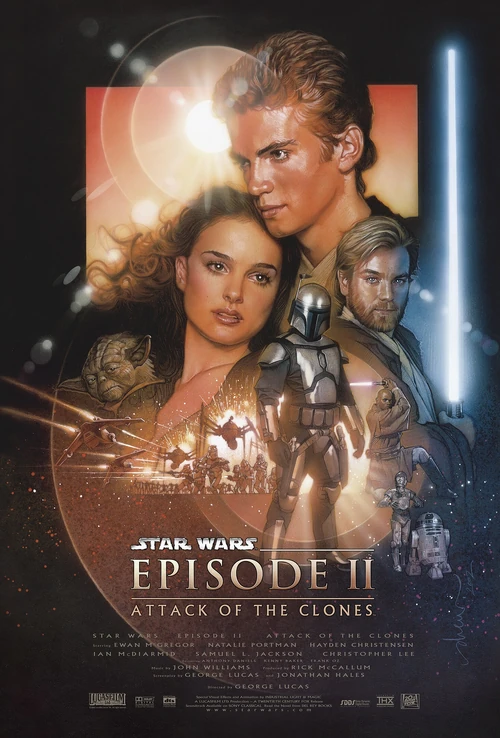
Most can acknowledge that Star Wars: The Phantom Menace was a polarizing film among both critics and fans of the franchise, although actual reception of the movie wasn’t completely “negative,” since The Empire Strikes Back and especially Return of the Jedi got weaker reviews upon their original releases. However, the former would ultimately receive vindication as a nigh-infallible “masterpiece,” and while it is indeed an amazing film, it does have serious flaws that “professional” film critics need to consider before passing it off as one of the “greatest movies of all time,” and many of the shortcomings of the original trilogy exist in the prequels as well.
Attack of the Clones occurs around a decade after Episode I, and opens with an assassination attempt upon the life of Padmé Amidala, who has since transitioned from Queen to Senator of Naboo. The culprit is none other than a servant of the bounty hunter Jango Fett, father of Boba, who serves as the genetic base for the eponymous clones that serve as the military for the Galactic Republic’s overwhelmed Jedi, with many star systems declaring their independence under the leadership of the enigmatic Count Dooku. As is the case with ghost-trapping in the Ghostbusters series, no one questions the ethics of using rapidly-aging human clones as an army.
There is also the inconsistency of Chancellor Sheev Palpatine’s claim that the Republic is a millennium old, when Obi-Wan Kenobi says in A New Hope that the Jedi have been guardians of the galaxy for a thousand generations, which the original Legends continuity somewhat addressed. The exact reasons for Palpatine not letting the rogue star systems go in peace is touched upon as well, and Obi-Wan goes to the planet Kamino, knowledge of which was erased from the Jedi Archives, to survey the clone army supposedly commissioned by long-dead Jedi Sifo-Dyas, and admittedly, not all of the holes in the franchise have been filled by the canon literature.
Jedi Padawan Anakin Skywalker also serves as guardian to Senator Amidala, and develops an attachment to the politician, which, alongside his Oedipus complex relating to his mother Shmi, is a catalyst for his ultimate fall to the Dark Side. Attack of the Clones introduces Anakin’s stepfamily, the Lars, on Tatooine when he goes to rescue his mother from Tusken Raiders that kidnapped his mother, whom Cliegg Lars, father to Owen, married after purchasing her freedom from slavery. Jar Jar Binks has a more subdued role in Episode II, eventually replacing Senator Amidala, with droid C-3PO serving far more as comic relief, and giving a slight tonal whiplash to the film.
Flashy battles conclude the film, with the Jedi deciding to adopt the clone army, and given that its basis attempted to assassinate Obi-Wan several times, it does raise the question of why he didn’t suspect something amiss. Overall, the film does definitely have its flaws, but I probably enjoyed it more than the sequel trilogy since it, alongside its predecessor and successor, aren’t cases of real life writing them or derivative of the original films. Some of the technology does appear superior to that in the original trilogy, but it’s largely due to Star Wars in general being more about the worlds and their inhabitants. Regardless, I would rather watch it and the other prequels than, say, a political documentary.
No comments:
Post a Comment